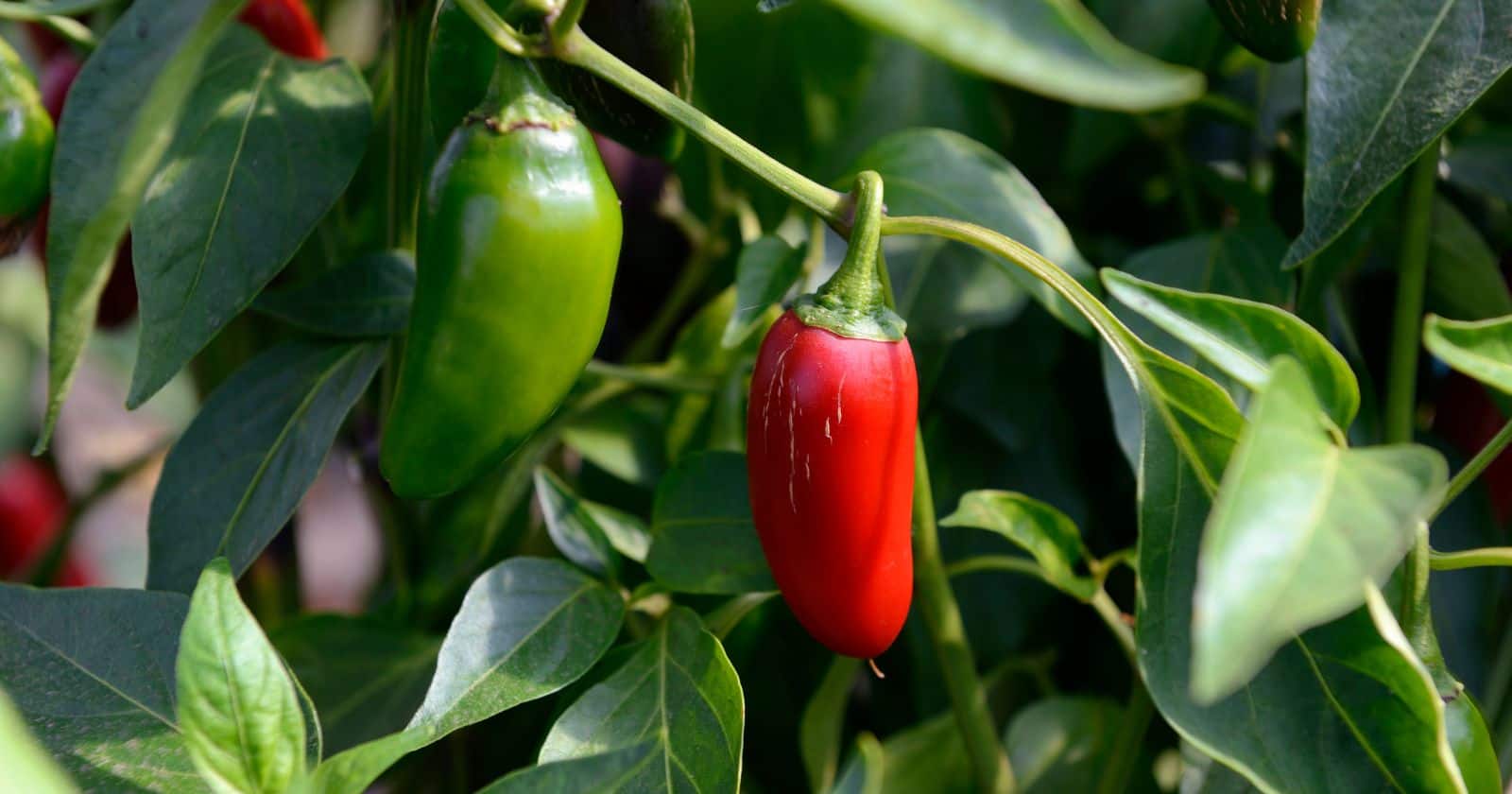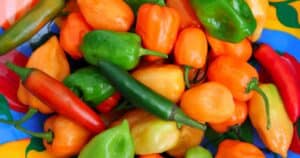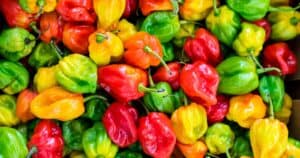With their flavors ranging from mild to scorching hot, jalapenos and habaneros are staple ingredients for spicing up salsas, tacos, chili and more. But when it comes to heat, how exactly do these two chili peppers compare?
While both deliver that addictive fiery kick, habaneros far outpace jalapenos for extreme heat due to their significantly higher concentration of capsaicin. By understanding key differences in their intensity, flavor, uses and health benefits, you can decide which pepper best suits your taste and tolerance for
In this comprehensive comparison guide, you’ll discover:
- How habaneros and jalapenos differ on the Scoville
spice scale - What gives habaneros their infamous searing heat
- Creative ways to temper habanero heat in your cooking
- Unexpected health perks these peppers provide
- Safety precautions for handling super-hot habaneros
Whether you’re Team Habanero or Team Jalapeno, this guide will help you become an expert on picking the right pepper to achieve your desired level of flavorful fire and smoky zing. Get ready to take your spicy recipes to the next level!
Feel the Heat: Habaneros Bring the Blaze
When it comes to scorching hot peppers, the habanero reigns supreme. Nicknamed the “Scotch bonnet pepper” for its distinct shape, these small but mighty chili peppers pack a staggering amount of heat.
On the Scoville scale, which measures a pepper’s pungency and
With all that extreme heat, you may be wondering why anyone would willing eat a habanero pepper? While they are undeniably scorching hot, habaneros also have an amazingly fruity, floral flavor. So along with the intense burn comes tropical notes of mango, pineapple, and citrus.
Jalapenos Bring a Milder Heat
Compared to the incendiary habanero, jalapenos are much milder in the heat department. With a Scoville rating of only 2,500 to 8,000 SHU, they are the perfect pepper for
Jalapenos have a crisp, vegetal taste and their heat builds slowly, without the intense pungency of a habanero. They are a popular pepper for numerous Mexican dishes, from salsa to tacos. For a little extra kick, allow jalapenos to fully ripen to red on the vine. Red jalapenos are slightly hotter, ranging from 5,000 to 8,000 SHU.
Now that you know a bit about their heat profiles, let’s explore more about what makes habaneros and jalapenos unique.
Appearance: Size, Shape and Color
You can tell habaneros and jalapenos apart at first glance based on their distinct size, shape and color.
Habaneros
- Small, only about 1-2 inches long
- Distinctive lantern shape with ridges along the pepper
- Range of color from bright green to orange and red when ripe
Jalapenos
- Typically 2 to 4 inches long
- Smooth, tapered cylinder shape
- Sold green but turn red as they ripen
So if you see small, wrinkly orange peppers – you’re looking at habaneros. And the larger, smooth green peppers are likely jalapenos. But don’t be fooled by color alone. Identification is easiest when you consider size, shape and color together.
Flavor Profiles: Fruity vs. Herbal
We know habaneros and jalapenos differ drastically when it comes to heat, but another key distinction is in their flavor profiles.
Habaneros have a distinctly sweet and fruity taste that balances out their extreme
Comparatively, jalapenos have an earthy, green flavor more akin to bell peppers and other mild chile varieties. Herbal, vegetal notes are dominant but their flavor is rather one-dimensional.
So in addition to bringing the heat, habaneros offer a more dynamic flavor experience. Their intense pungency is counterbalanced by pleasant fruity and floral tones.
Common Uses: Salsa to Hot Sauce
Given their differing levels of heat, jalapenos and habaneros are used in distinct ways in the kitchen.
Jalapenos
- Salsas
- Stuffed peppers
- Nachos
- Tacos
- Chili
- Pickling
With their milder heat, jalapenos can be used in a wide variety of dishes. Their subtle spiciness adds flavor without overpowering other ingredients.
Habaneros
- Hot sauces
- Marinades
- Chilies
- Spicy salsas
- Jerk seasonings
Habaneros are best used in dishes where extreme heat is desired, like searing hot sauces. They also work well paired with sweet ingredients to balance their
Growing Regions: Mexico and the Yucatán Peninsula
Both habanero and jalapeno peppers originated in Mexico. However, they flourish in different regions thanks to unique soil and climate conditions.
Jalapenos grow best in the rich soil of southern Mexico and are also now cultivated in Texas and California.
Habaneros thrive in the hot, humid Yucatán Peninsula region, where they’ve been cultivated for centuries by native Mayan and Aztec people. They also grow well in Belize and areas of Central America and the Caribbean.
So jalapenos are best suited to more arid desert climates, while habaneros prefer tropical, humid environments. But thanks to global trade, both peppers can now be found around the world!
Health Benefits: Nutrients and Antioxidants
Alongside capsaicin-induced endorphin release (which may positively enhance mood), both habanero and jalapeno peppers offer notable health benefits.
As members of the capsicum family, they contain key antioxidants like vitamin C, vitamin A and carotenoids. Spicy peppers also provide vitamin B6, potassium and fiber.
Additionally, early research indicates capsaicin may:
- Boost metabolism and fat burning
- Reduce inflammation
- Lower blood pressure
- Benefit cardiovascular health
However, moderation is key as very high doses of capsaicin can irritate the digestive tract. Those with sensitivity may need to adjust serving sizes accordingly.
Overall, incorporating reasonable amounts of habaneros or jalapenos into your diet can be an effective way to add flavor along with nutrition!
Handling Hot Peppers 101
Given the extreme heat of habaneros in particular, proper handling technique is crucial to avoid unpleasant results. Here are some tips:
- Wear gloves when cutting any hot peppers to keep oils off bare skin
- Avoid hand to face contact especially near eyes or nose
- Work in a ventilated area to dissipate volatile oils
- Remove seeds and white ribs to reduce heat
- Wash hands and work surface thoroughly after prep
- Never touch soft contacts while prepping hot peppers
Take the proper precautions when working with habaneros and jalapenos, and you can safely enjoy their flavor with minimal risk of discomfort.
Experiencing the Heat: Putting Habaneros vs. Jalapenos to the Test
To fully grasp the differences between these peppers, you really need to try them for yourself. Start with a sliced jalapeno and you’ll notice a slow, mild tingle.
Move up to a habanero and you’ll feel an instant surge of mouth-searing, eye-watering heat. It’s a totally different level of
Now that you know exactly how the heat, taste and uses differ between these two popular peppers, it’s time to decide if you prefer the mellow jalapeno or the fiery habanero. Either way, keep some milk or yogurt close by in case that spicy tingle becomes too much to handle!





